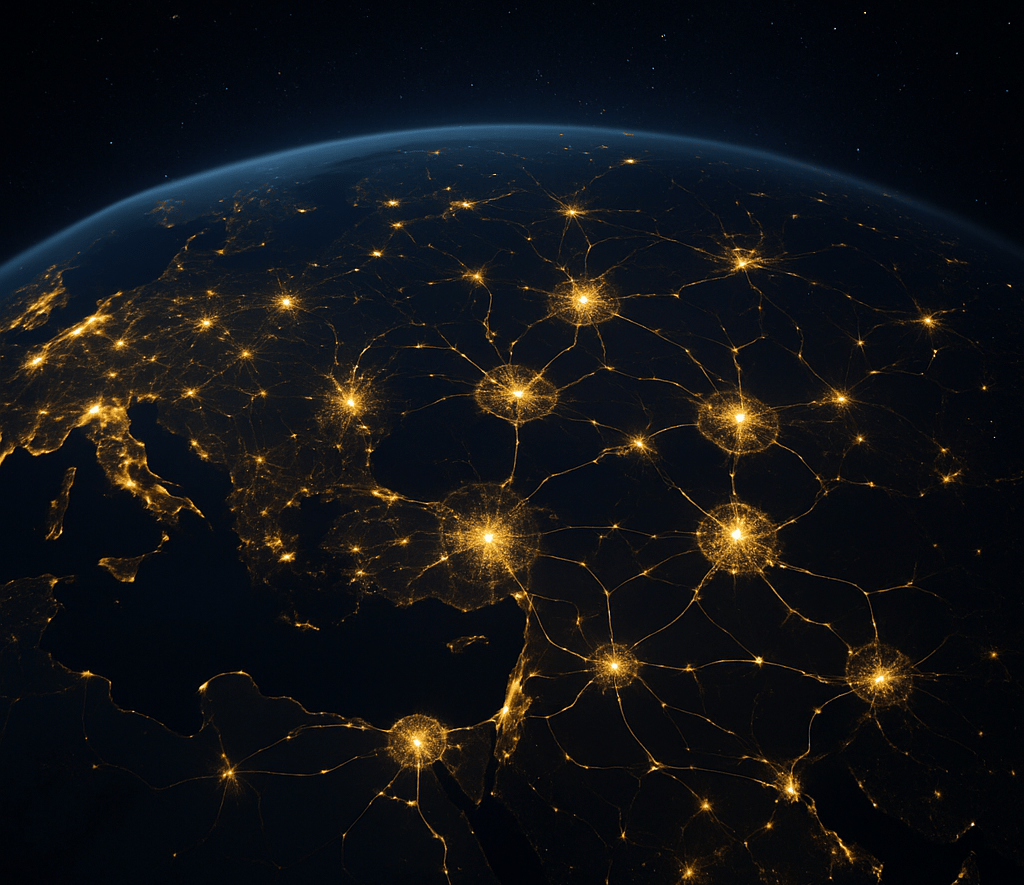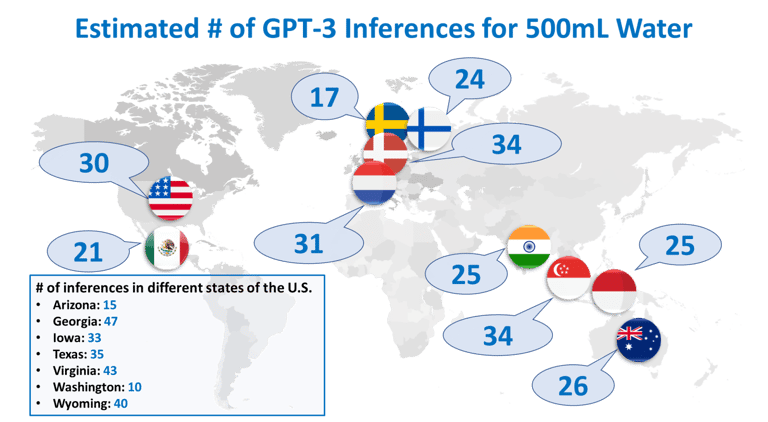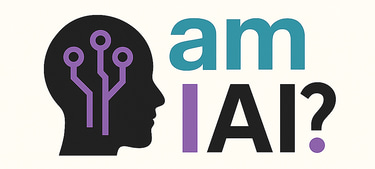Can AI Help Fight Climate Change—Or Is It Part of the Problem
AI and the Environment: The Real Impact, the Hidden Costs, and the Greener Path Forward.
AICLIMATE CHANGEWATER MANAGEMENTENVIRONMENT
Haily Fox
8/10/202510 min read


I hear it all the time when I tell people I’m an AI consultant: “Isn’t AI terrible for the environment?”
It’s a good question, especially with recent headlines highlighting the massive energy and water use behind large models like ChatGPT or Gemini. But like most things in the world, the truth usually lies among nuance.
Everybody living in the modern world today has to justify doing something that is bad for the environment. From driving cars, to eating factory-farmed meat, to, yes, using AI, we all have consumed in some way that has negatively impacted the environment, even if only in a small, individual way.
I’m here to offer insights so you can make informed decisions about when and how to use AI ethically, consciously, and with full transparency about the trade-offs.
Let’s dive in!
The Hidden Environmental Cost of AI
Training large language models (LLMs) like GPT-4 isn’t just data-heavy, it’s resource-heavy too. These AI systems require massive amounts of electricity and water to operate, making AI water consumption a rising concern in tech sustainability conversations.
According to an 2019 study at the University of Massachussets Amherst, training a single large AI model can emit up to 5 times as much carbon as 5 cars over their lifespan. That is about 626,000 lbs of CO₂.
A single Google data center can consume as much energy as 80,000 U.S. homes annually, and while AI currently accounts for around 10–15% of this usage, it's projected to double by 2030.
Powering GPT 4 is Equivalent to powering 100,000 homes for a day.
A study on GPT‑3 training reported it evaporated approximately 700,000 liters of freshwater in Microsoft's U.S. data centers.
Water scarcity is growing. Training just one large model can drain enough freshwater to supply hundreds of families.
A broader estimate suggests every GPT‑3 prompt uses around 500 ml of water per 10–50 responses.
Image Source: https://arxiv.org/abs/2304.03271
AI Model Training: Why It Matters for Energy and Water Use
These days, it seems like everything is “AI powered.” It’s no longer just in your apps… it has expanded beyond those borders and into things like household appliances, medical facilities, and almost every aspect of daily life. Of course, with this exponential increase in AI usage, its impacts on the environment are also exponentially increased.
To understand how AI affects the environment, we first need to understand how it’s trained. Not all models are created equal—and some consume significantly more resources than others:
Supervised Learning (Somewhat Energy Intensive)
A type of AI learning where inputs are paired with correct outputs.
A good way to understand this is a student learning with a textbook that has an answer key.
This makes these AI models good for something specialized, like facial recognition, or predicting numerical values.
Unsupervised Learning (More Energy Efficient)
Unsupervised learning identifies patterns in unlabeled data, meaning it finds patterns, groupings, or structures in the data without any explicit instruction on what to look for.
Instead of being told “this is a cat,” the model is given a large dataset and left to discover the pattern on its own.
When DeepMind machine learning was applied to Google Data Centers, it reduced the energy they use for cooling by 40%, which is huge!
Reinforcement Learning (Most Energy Intensive)
Reinforcement Learning (RL) is where an AI agent learns to make decisions by interacting with an environment to maximize cumulative rewards.
RL is trial-and-error-based, inspired by behavioral psychology. It is used in tesla cars, by learning which decisions result in collisions (negative feedback) vs avoiding collisions (positive feedback).
Used in Youtube algorithms (longer watch time = positive feedback= it suggests more things like that to you)
So yes, some of the more common and intensive AI models use a lot of resources and energy, with GPT 3 and 4 being at the top of the list. However, there are lots of examples of AI models that have been trained using a lot less resources.
Green AI: What It Is and Why It’s the Future of Ethical Tech
While we have discussed the alarming carbon footprint of the more common models like GPT 3 and 4, it’s important to understand that not every AI is created equally.
The energy consumed by DeepSeek during inference is about one-tenth that of comparable large models.
It also uses up to 40% less energy per task than earlier models.
Claude models like Claude 3.5 Sonnet and Claude 3 Opus are designed with sustainability and efficiency in mind.
According to recent benchmarking data Claude uses significantly less energy per user query than models like GPT-4 or DeepSeek.
Unlike models like GPT-4, which use Reinforcement Learning with Human Feedback, which is a resource-intensive process, Claude likely relies more on self-supervised learning and constitutional AI, which requires fewer iterations, less trial-and-error computation, and lower total training load.
Anthropic, the company that created Claude, has committed to developing safer, more sustainable AI, and is using carbon offsets and renewable energy where possible and partnering with initiatives aimed at improving AI’s transparency and resource accountability.
While we do not yet have complete transparency from larger companies like OpenAI and Google, they claim they are adopting renewable energy and carbon-neutral operations to curb AI's environmental impact.
5 Best Environmentally Conscious Ways to Implement AI Into Your Workflow
Audit Use-
Using models from more environmentally conscious companies like Anthropic, instead of Chat GPT, can make a huge difference.
Evaluate where and how AI is currently used. Do your own research to determine the best options for you.
Choose Efficient Tools
Use lightweight, task-specific AI models instead of relying on large general-purpose ones for every job.
Batch & Automate Wisely
Limit your use of AI to necessary tasks only.
Host Sustainably
Opt for cloud providers with green energy commitments (like AWS Clean Energy)
Stay Informed
This space moves fast. Regularly revisit your tools, vendors, and processes with sustainability in mind.
Where AI Can Actually Help the Climate
Much like the internet, AI is not necessary only good or only bad. It really is what people make of it, and what large companies do with it that counts. It is highly important to analyze the ways in which AI may not only help us move towards environmental sustainability of itself, but just in general also.
Potential environmental benefits of AI include:
Optimizing Energy Systems: AI can forecast energy demand, improve grid efficiency, and integrate renewable sources more smoothly. Google DeepMind's AI, for instance, has helped reduce energy use in data centers by up to 40%.
Climate Modeling & Prediction: Machine learning models can analyze satellite imagery, climate data, and historical patterns to predict wildfires, floods, and rising sea levels with increasing accuracy. NASA employs AI to track deforestation and ice melt in real time and Google’s DeepMind used AI to predict rainfall patterns 1–2 hours in advance with 90% accuracy. It is predicted that better disaster preparedness could save $300B/year in climate-related damages and help save many lives.
Supply Chain Efficiency: AI-powered transportation routes can reduce transportation emissions by minimizing delivery distances, and streamlining global operations. Maersk has reportedly already cut fuel use by 10%. It is predicted that AI could reduce global logistics emissions by 15%.
Sustainable Agriculture: AI could increase global crop yields by 20% while reducing water waste. AI optimizes water, fertilizer, and pesticide use via drones and IoT sensors which are used to monitor soil health, optimize irrigation, and reduce pesticide use, helping farmers increase yield while lowering environmental impact. . IBM’s Watson Decision Platform has already helped farmers reduce water usage by 30%. It also predicts crop yields and detects diseases early.
Carbon Capture & Storage and Carbon Accounting: Companies can now use AI tools to track their carbon footprints in real time, identify emissions hotspots, and meet regulatory or ESG goals. CarbonCure uses AI to inject CO₂ into concrete, reducing its carbon footprint. DeepMind’s AlphaFold helps design enzyme-based CO₂ capture.
Pollution Monitoring & Cleanup: It is predicted that AI could help remove up to 90% of the plastic from the ocean by 2040! AI-powered sensors detect air and water pollution in real time and AI robots are then sometimes sent to clean up plastic in the ocean and even oil spills.
Wildlife Conservation & Anti-Poaching: AI has already helped reduce Rhino poaching by up to 50%! That is huge! It can analyze camera trap images and sensors to track endangered species, and can predicts poaching hotspots using satellite and drone data. Wildlife Insights processes millions of animal photos to monitor biodiversity and it helps PAWS (Protection Assistant for Wildlife Security) predict poacher movements with 93% accuracy.
So, Where Do I Stand on AI and the Environment?
I think its important to look at the bigger picture when making informed decisions about using AI. I think it is actually important to do this for everything, but especially true when discussing topics like introducing AI to the workplace.
Factory-farmed meat is one of the largest contributors to greenhouse gas emissions globally. Some sources say livestock accounts for nearly 14.5% of global emissions, more than the entire transport sector combined. Producing just one pound of beef can use up to 1,800 gallons of water, which is far more than the 500 ml per AI query you might make in a week.
Likewise, the average gasoline-powered car emits over 4.6 metric tons of CO₂ every year. Even if you used an AI chatbot every single day, your emissions footprint from driving is likely still far worse.
I am not saying any of this to excuse AI, or to say that just because some things are worse, doesn’t mean we shouldn’t have these conversations. I am saying the exact opposite, which is that as the use of AI is on the rise, and energy demands for it are also on the rise, it is important for us as consumers to not only be educated in the solutions and alternatives, but also to put the pressure on larger companies to be more transparent.
We can also just decide not to use the AI associated with corporations we can not ethically stand behind, since there are so many new AI models rolling out.
Personal Note:
As someone who works with companies to implement AI workflows, I believe in using these tools consciously, not just efficiently, and one of my first and longest standing personal causes and undertakings has always been the environment.
Yes, AI can help you eliminate workflow bottlenecks, enhance content creation, and enhance customer experiences, but it shouldn’t come at the expense of our environment.
The good news? You can build smart, sustainable AI strategies that serve your business and the planet.
Contact me to learn more: hailyfox@amiai.blog
For more Human insight on AI, follow me on Instagram: @amiaiblog
or check in on Wednesdays and Sundays for more!
FAQs: AI & Climate Change
Q: Is AI really a major contributor to climate change?
A: While not the largest source, AI does consume significant energy when training large models. While AI use increases, so does the need for environmentally sustainable solutions
Q: Can small businesses make AI more sustainable?
A: Absolutely. Even switching to smaller models, clustering requests, or choosing green hosting alternatives can make a big difference.
Q: What’s the most energy-efficient way to use AI in a business setting?
A: Use lightweight models for simple tasks, minimize unnecessary API calls, and audit your usage regularly.
Q: Are there AI tools designed specifically for sustainability?
A: Yes. There are many already making large changes in environmental impact across a variety of fields, from agriculture to transportation, to data collection for scientists.
Q: What’s the biggest misconception about AI and climate change?
A: That the problem is too big to manage or that you have to support big companies who you may not agree with in order to use AI or implement it into your workflow.
Wr
i
te your text here...


Citations and Sources:
Strubell, E., Ganesh, A., & McCallum, A. (2019). Energy and Policy Considerations for Deep Learning in NLP. arXiv:1906.02243
https://arxiv.org/abs/1906.02243
Masanet, E., et al. (2020). Recalibrating Global Data Center Energy-Use Estimates. Science, 367(6481), 984–986
https://doi.org/10.1126/science.aba3758Patterson, D., et al. (2022). Carbon Emissions and Large Neural Network Training. arXiv:2204.05149
https://arxiv.org/abs/2204.05149Li, P., et al. (2023). Making AI Less "Thirsty": Uncovering and Addressing the Secret Water Footprint of AI Models. Nature Communications, 14(1), 4817
https://doi.org/10.1038/s41467-023-40511-7United Nations World Water Development Report (2023). Water and Climate Change
https://unesdoc.unesco.org/ark:/48223/pf0000372985Bender, E. M., et al. (2021). On the Dangers of Stochastic Parrots: Can Language Models Be Too Big? FAccT Conference
https://doi.org/10.1145/3442188.3445922Sevilla, J., et al. (2022). Compute Trends Across Three Eras of Machine Learning. arXiv:2202.05924
https://arxiv.org/abs/2202.05924Anthony, T., et al. (2017). Thinking Fast and Slow with Deep Learning and Tree Search. NeurIPS
https://proceedings.neurips.cc/paper/2017/hash/3a20f62a0af1aa152670bab3c602feed-Abstract.htmlSchwartz, R., et al. (2020). Green AI. Communications of the ACM, 63(12), 54–63
https://doi.org/10.1145/3381831Thompson, N. C., et al. (2020). The Computational Limits of Deep Learning. arXiv:2007.05558
https://arxiv.org/abs/2007.05558Anthropic (2024). Claude 3.5: Design and Efficiency
Bai, Y., et al. (2022). Constitutional AI: Harmlessness from AI Feedback. arXiv:2212.08073
https://arxiv.org/abs/2212.08073Anthropic Sustainability Report (2023)
Wynes, S., & Nicholas, K. A. (2017). The Climate Mitigation Gap: Education and Government Recommendations Miss the Most Effective Individual Actions. Environmental Research Letters, 12(7)
https://doi.org/10.1088/1748-9326/aa7541FAO (2013). Tackling Climate Change Through Livestock
https://www.fao.org/3/i3437e/i3437e.pdfEPA (2022). Greenhouse Gas Emissions from a Typical Passenger Vehicle
https://www.epa.gov/greenvehicles/greenhouse-gas-emissions-typical-passenger-vehicleEvans, R., & Gao, J. (2016). DeepMind AI Reduces Google Data Center Cooling Bill by 40%
Reichstein, M., et al. (2019). Deep Learning and Process Understanding for Data-Driven Earth System Science. Nature, 566(7743), 195–204
https://doi.org/10.1038/s41586-019-0912-1McKinsey (2021). AI in Logistics: Cutting Costs and Emissions
https://www.mckinsey.com/~/media/McKinsey/Business%20Functions/McKinsey%20Analytics/Our%20Insights/Global%20survey%20The%20state%20of%20AI%20in%202021/Global-survey-The-state-of-AI-in-2021.pdfWolfert, S., et al. (2017). Big Data in Smart Farming: A Review. Agricultural Systems, 153, 69–80
https://doi.org/10.1016/j.agsy.2017.01.023Keith, D. W., et al. (2018). A Process for Capturing CO₂ from the Atmosphere. Joule, 2(8), 1573–1594
https://doi.org/10.1016/j.joule.2018.05.006The Ocean Cleanup (2023). System 03 Trial Results
https://theoceancleanup.com/updates/Berger-Wolf, T. Y., et al. (2017). Wildbook: Crowdsourcing, Computer Vision, and Data Science for Conservation. arXiv:1710.08880
https://arxiv.org/abs/1710.08880Wired (2023). New Research: Energy and Electricity Use in AI
https://www.wired.com/story/new-research-energy-electricity-artificial-intelligence-ai/?utm_source=chatgpt.comOECD (2023). How Much Water Does AI Consume?
https://oecd.ai/en/wonk/how-much-water-does-ai-consumeMIT (2025). Explained: The Environmental Impact of Generative AI
https://news.mit.edu/2025/explained-generative-ai-environmental-impact-0117#:~:text=Rapid%20development%20and%20deployment%20of,electricity%20demand%20and%20water%20consumption
